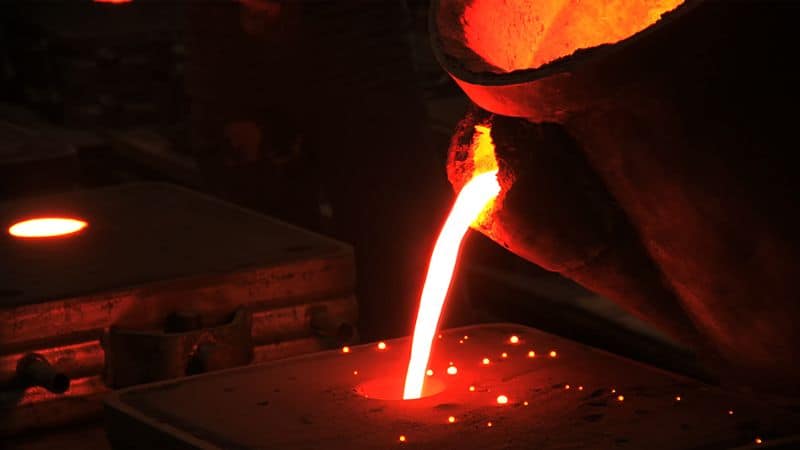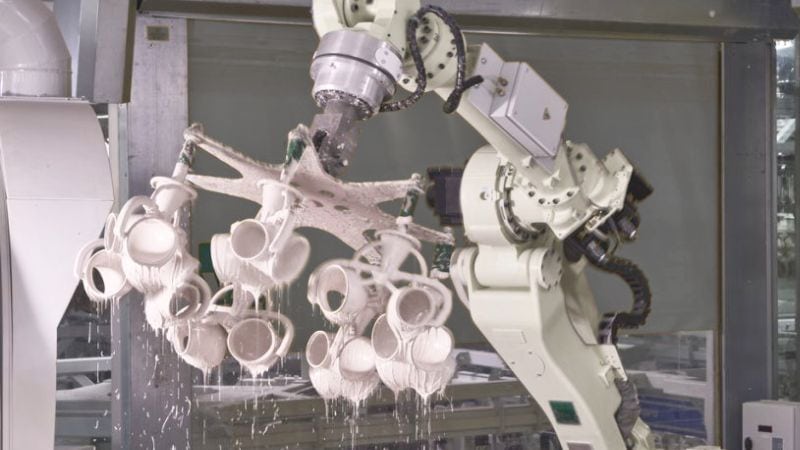Key Takeaways
| Key Points | Investment Casting | Die Casting |
|---|---|---|
| Process | Uses a wax pattern coated in ceramic; wax melted out to create mold. | Molten metal forced under high pressure into a reusable steel die. |
| Materials | High-melting-point metals (steel, stainless steel, titanium, superalloys). | Non-ferrous metals (aluminum, zinc, magnesium, copper). |
| Tolerances | Moderate (±0.5 mm to ±0.1 mm). | Tight (±0.05 mm to ±0.2 mm). |
| Surface Finish | Good (Ra 1.6–6.3 μm); may require finishing. | Excellent (Ra 0.8–3.2 μm); minimal post-processing. |
| Cost | Higher per-unit cost for small batches; lower tooling cost. | High initial die cost; lower per-unit cost for large volumes. |
| Production Volume | Ideal for low to medium volumes (prototypes, custom parts). | Best for high-volume mass production. |
| Part Complexity | Highly complex geometries, intricate details, and internal features. | Moderate complexity; thin walls and fine details possible. |
| Applications | Aerospace, jewelry, medical implants, art. | Automotive parts, consumer electronics, appliances, hardware. |
What is Investment Casting
Investment casting is a precision metal forming method that creates complex parts with excellent surface finish and dimensional accuracy.
Investment casting dates back thousands of years. Ancient civilizations in China, Egypt, and Mexico used early forms of this technique to create intricate bronze items and jewelry around 4500 BCE.
The process was also called “lost wax casting” because it used wax patterns that were melted away.
During the Industrial Revolution, dentists adopted the method to make crowns and inlays.
In the 1940s, World War II created high demand for precision parts, pushing investment casting into mainstream manufacturing.
Today, computer modeling and automated equipment have dramatically improved the process. Modern investment casting can produce parts with tolerances as tight as ±0.5 mm.
Process and Techniques
Investment casting begins with creating a wax pattern that’s an exact replica of the desired part.
Next, the pattern is attached to a “tree” with other wax patterns. This assembly is dipped repeatedly in ceramic slurry and coated with stucco material to build up a shell.
( The “tree” refers to a branched structure that holds multiple wax patterns together during the mold-making process.)
Once the shell hardens, it’s placed in an oven upside down. The wax melts and drains out (hence the term “lost wax”), leaving a hollow ceramic mold.
The mold is preheated to high temperatures before molten metal is poured in. After cooling, the ceramic shell is broken away to reveal the cast parts. Final steps include cutting parts from the tree and performing finishing operations.
Materials Used in Investement Die Casting
Investment casting works with a wide range of metals and alloys. Common materials include:
Ferrous alloys:
- Carbon and low-alloy steels
- Stainless steel
- Tool steels
Non-ferrous alloys:
- Aluminum
- Copper-based alloys (bronze, brass)
- Nickel-based alloys
- Titanium
The ceramic shell materials typically consist of silica, zircon, and aluminum silicates. These materials can withstand extremely high temperatures needed for pouring molten metals.
Overview of Die Casting

Die casting is a popular metal forming process that offers high production speeds and excellent dimensional accuracy. It’s widely used in industries requiring complex metal parts with consistent quality.
Unlike investment casting, die casting is designed for high-volume production runs. The dies are made from durable tool steel that can withstand thousands of casting cycles.
Die casting machines come in two main types: hot chamber and cold chamber machines.
Hot Chamber Machines:
- Ideal for low-melting-point metals like zinc and magnesium
- Metal melts directly in the machine
- Faster cycle times
- Good for smaller parts
Cold Chamber Machines:
- Better for aluminum, copper, and other higher-temperature alloys
- Metal is melted separately and added to the machine
- Can handle larger parts
- More commonly used in industrial applications
Alloys Commonly Used
Aluminum alloys are most popular due to their excellent combination of lightweight properties and strength.
Zinc alloys provide excellent detail reproduction and thin-wall casting capabilities.
Magnesium alloys offer the lightest weight option while maintaining good strength.
Copper alloys like brass and bronze provide superior strength, electrical conductivity, and corrosion resistance but are more expensive and difficult to cast.
Comparing Investment and Die Casting.

Key Differences
The biggest difference is in the molds. Die casting uses reusable metal molds, while investment casting requires a new mold for each part. This makes die casting more economical for large production runs but investment casting better for complex or detailed parts.
Quality and Precision
Investment casting typically gives you better surface finishes and can hold tighter tolerances. You can achieve details as fine as 0.1mm with this method. The process allows for more complex geometries and internal features that might be impossible with die casting.
Die casting provides good dimensional accuracy but may have limitations with certain complex shapes.
Production Speed and Volume
Investment casting takes considerably more time. Each part requires creating a new wax pattern and ceramic shell, which adds days to the production timeline. For small batches under 100 pieces, this might not matter much.
If your project needs more than 10,000 pieces, die casting becomes much more cost-effective.
Advantages and Limitations
Investment Casting Pros and Cons
Advantages:
- Excellent for complex designs with intricate details and thin walls
- High dimensional accuracy (0.005 inch per inch)
- Superior surface finish requiring minimal post-processing
- Wide material selection including steels, stainless steels, and exotic alloys
- Good for small production runs with lower tooling costs
Limitations:
- Higher per-unit cost compared to die casting
- Slower production rate due to multiple process steps
- Size limitations (typically smaller parts)
- Labor-intensive process requiring skilled technicians
- Longer lead times from design to finished part
Die Casting Pros and Cons
Advantages:
- Very fast production rates for high-volume manufacturing
- Low cost per unit once tooling is established
- Good dimensional consistency across large production runs
- Excellent for thin-walled parts (as thin as 0.5mm)
- Smooth surface finish with good detail reproduction
Limitations:
- High initial tooling costs that must be amortized
- Limited to non-ferrous metals like aluminum, zinc, and magnesium
- Potential for porosity issues in thicker sections
- Not ideal for small production runs due to setup costs
- Less suitable for parts requiring high strength
Frequently Asked Questions
What are the key factors that affect the choice between investment casting and sand casting?
Investment casting produces better surface finishes and tighter tolerances than sand casting. If your part needs precision or a good appearance, investment casting has the edge.
Sand casting is typically less expensive for very large parts where investment casting would be impractical. The size limitations of investment casting make sand casting better for larger components.
The tooling costs for sand casting are lower than both investment and die casting, making it good for prototype or one-off parts where cost is the primary concern.

